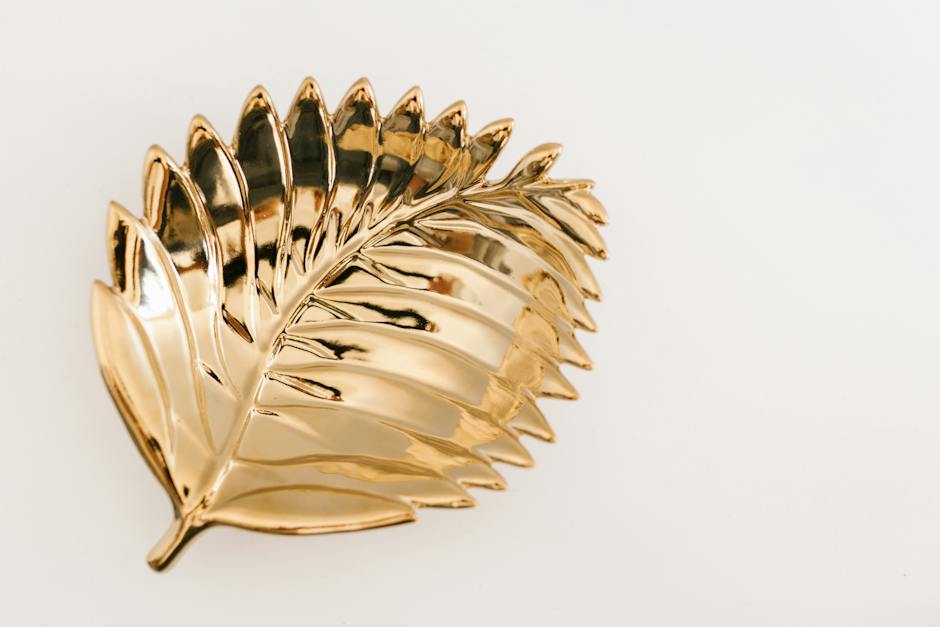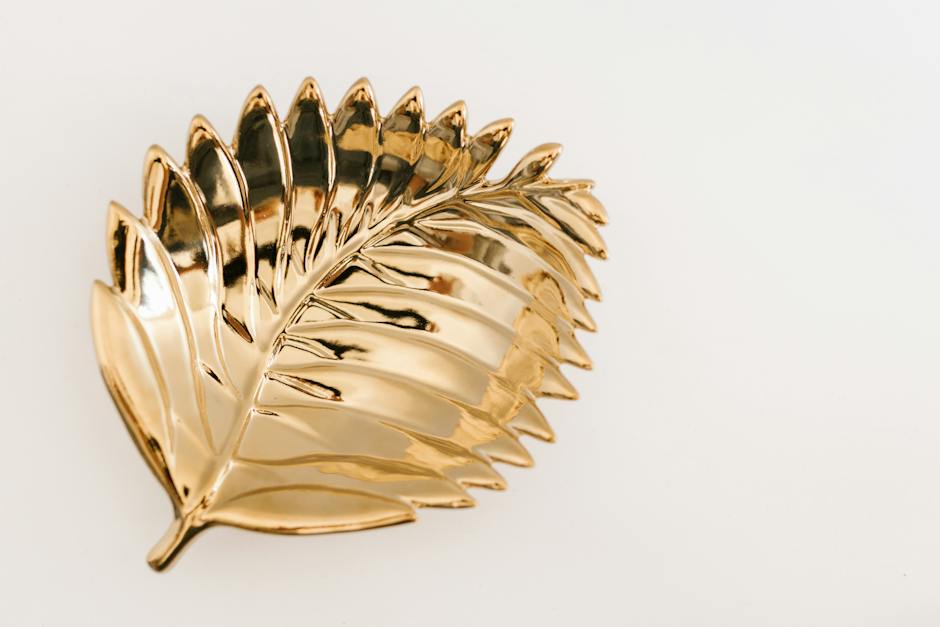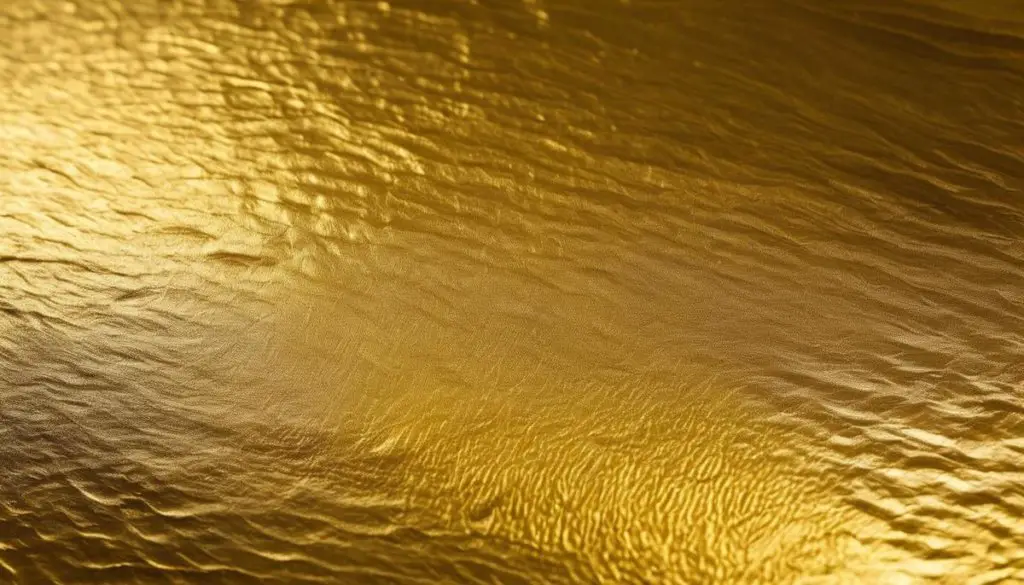Gold leaf painting, a meticulous art form intertwined with opulence and grandeur, has been capturing the fascination of artists and admirers alike for centuries. The technique, which incorporates thin sheets of gold, finely hammered to near transparency, provides an iridescent gold finish to the surfaces it graces. The inherent allure of gold leaf does not simply hinge on its radiant beauty, but equally upon the skill and knowledge required to manipulate it. Attention to minute detail, understanding of the peculiar properties of the gold leaf and competent handling are crucial while exploring this artistic dominion. Principal focus lies also in the proper application methods and strategies that involve preparation of surfaces, correct use of adhesive, timely laying of the leaf, polishing and potential reparations. Ultimately, the true essence of a gold leaf painting transcends its physical attributes and relies heavily on the underlying design and composition. Indeed, the judicious use of gold leaf can augment the appeal of a painting manifold by highlighting certain elements, introducing contrasting shades or giving an added depth and dimension.
Understanding Gold Leaf
The Lustrous Allure of Gold Leaf in Art: Exploring its Properties and Varied Uses
A shimmering veil draws the eye and ignites the imagination. It dances in the light, dazzling with an ancient, luxurious appeal—one might even say—and we wouldn’t be wrong—that this is literal sunshine in art. This is the irrefutable magic of gold leaf, a material that has created some of the most captivating works in the history of art.
This article takes a leisurely, yet informative journey around the enthralling world of gold leaf, uncovering its fascinating attributes while delving into various uses within art.
Origins and Characteristics
Gold leaf has long been favoured in art due to its breathtaking beauty, but the properties of this fascinating medium stretch beyond mere aesthetic value. Originating from gold that has been hammered into thin sheets, it boasts both longevity and versatility.
Gold leaf does not tarnish, corrode or decay, attributes it shares with its source metal. This means that works of art adorned with gold leaf maintain their radiance and remain preserved for many generations.
Appreciated for its lightweight nature and extreme malleability, gold leaf can be applied to large and small surfaces alike. It imparts a majestic glow and texture that can transform the ordinary into the extraordinary.
From a historical perspective, the use of gold leaf has always been associated with grandeur and opulence. It’s an ancient art form with roots that go back to ancient civilisations like the Egyptians and Romans, who used gold leaf extensively, especially in intricate decoration and architectural enhancements.
Its aesthetic qualities and enduring characteristic has seen this material embraced across a variety of artistic mediums and explored by various formidable artists.
Uses across Art
In sculpture and architecture, gold leaf imparts a grand presence, transforming edifices into breathtaking masterpieces. From historical landmarks such as Versailles to modern works of public art, this material has proven its enduring charm and impact.
Gold leaf finds an enthusiastic following in painting too. It has been employed in works ranging from meticulous iconographies in Byzantine art to extensive use in Japanese art. It’s a feature in the delineation of halos in sacred art, lending celestial vivacity to heavenly beings.
Various forms of printmaking have also taken advantage of gold leaf. Letterpress, for instance, has seen a resurgence in using this medium to elevate typed words into luxurious statements.
In the realm of mixed-media art, gold leaf allows for an exciting exploration of texture and colour contrasts. It plays with light in a way that can add depth and richness to a piece. The result is a delicious tension between varying visual components that is both enthralling and inspiring.
Ultimately, gold leaf’s allure lies in its capacity to fascinate, to enchant, and to transform—an artistic narrative woven into any gold-infused work. It continues to be a significant artistic element, captivating artists and audiences alike with its timeless elegance and unending potentiality.

Gold Leaf Application Techniques
The Art of Gold Leaf Application: A Creative Yet Informative Guide
To engage in the application of gold leaf onto a surface is to participate in a tradition that spans centuries and cultures. But the meditative act of gilding is not purely reminiscent of history; it is a process gleaming with modern relevance. Today, let us embark on the journey of understanding how to apply gold leaf effectively.
It all begins with planning. Which surface you choose to embellish with the lustrous glow of gold leaf can make all the difference. Whether you are decorating a canvas, a wooden frame or paper, ensure your surface is clean, smooth and free from dust.
The adhesive, often referred to as ‘size’, is crucial in this process. It is the bond between the delicate gold leaf and its surface. The ‘size’ should be thinly and evenly applied over your chosen area using a soft-hair brush. The milky appearance will eventually become transparent.
Patience is of essence once the ‘size’ is on the surface. It needs to reach the state of ‘tackiness’ to secure the gold leaf properly – neither too wet nor too dry. Be keen to follow the manufacturer’s guide concerning the open time for the specific ‘size’ you are using.
The heart of the process now begins, brandishing the gold leaf. Gold leaf is incredibly thin and thus requires handling with utmost care. The preferred method is to use a gilder’s tip, a flat natural brush to lift the leaf. Lightly passing the brush hairs over your skin might aid in creating adequate static to pick up the gold leaf.
When your gold leaf is on the gilder’s tip, gently bring it forth and lay it onto the tacky area. When you pull the brush away, the gold should remain on the surface. Repeat this process until your designated area is fully gilded.
Right after adhering the gold leaf to your surface, the gilder’s mop, a large, soft, round brush, is utilised to softly brush over the leaf. This gentle whisking motion deflects any loose or overlapping pieces.
To further smooth and ensure adherence of the leaf to the surface, burnishing comes into play. A gilder’s burnisher, a tool with a smooth agate stone, is gently rubbed on the gold leaf, compacting it into the size.
Finally, sealing the gold leaf with varnish is a key step, particularly for pieces likely to be exposed to touch or environmental elements. However, remember that some gold leaf, particularly 24-carat varieties, does not need sealing.
This application of gold leaf, this investment of time, energy, and precision, transmutes the ordinary into the extraordinary, and sees the surface emerge as a living testament of golden luminosity, harking back to eras past while firmly transcending into the and now. It is here where the transformative power of gold leaf truly ignites, allowing us to partake in a grand artistic tradition and create artwork that truly shines. Pictorial evidence of this transformative journey can be a fascinating array of creative prowess!
Now, having explored the process, it is over to you, fellow artisans. Commence your journey and let your creations sparkle with the true magic of gold leaf.

Design and Composition in Gold Leaf Painting
Capturing the Elegance of the Gold Leaf
Discovering the capture of vivid elegance through gold leaf painting can be a tremendously rewarding adventure. Peerlessly beautiful, the gold leaf bit provides an explosion of brilliance wherever it touches – its undeniable allure penetrates the world of art, transforming good into exceptional, and ordinary into extraordinary. Now that we’ve addressed the characteristics and historical value of gold leaf, let’s dive into the artistic process of harnessing its beauty through painting.
Striking a Gold Leaf Design
Designing with gold leaf may appear formidable at first. However, breaking down the process reveals a series of simple steps. To allow your artwork to really shine, a vision is required. Begin with a clear image in mind – think about how the golden glow will tie your elements together, where it will catch the light, and how it will enhance the work’s overall ambience.
Selecting the Right Materials
Equipment selection is crucial in gold leaf artistry. It’s advisable to work with oil-based adhesive for a longer open time. Manufactured specifically for metal leaf work, such as gold, it secures the leaf brilliantly and provides extended tack time.
Creating the ‘Base’ for Your Artwork
Start off by preparing your canvas or surface. For metallic leaf application, surfaces need to be clean, smooth, and free of dust or oils. Remember, preparation is often the key to successful gold leaf application.
Applying the ‘Size’
Once your surface is ready, apply the adhesive or ‘size’. Then, wait patiently for it to reach an optimal level of stickiness before proceeding. This is called ‘coming to tack’. Patience is a virtue that should be exercised here as rushing can yield unprofessional results.
Applying the Gold Leaf
Carefully apply the gold leaf using gilder’s tip onto the ‘sized’ area. Let the delicate sheet touch the prep surface slightly, then tip off rest of the leaf sheet. Be gentle with the gold leaf as it is fragile and prone to damage.
Final Touches for a Radiant Outcome
Once the leaf has been applied, use a gilder’s mop to lightly brush over the surface. This fine brush allows you to remove any excess gold leaf. Follow up with a gilder’s burnisher, giving a thorough but gentle rub. This process will smooth down the leaf whilst improving its adherence, revealing its full luminosity.
Protection: The Last Step
Finally, consider sealing your artwork with a clear, non-reactive varnish to protect it. Keep in mind that some types of gold leaf, like pure form, require careful consideration of the sealant to avoid tarnishing.
What you are left with is a captivating, luminous masterpiece, invigorated by the unique allure that only gold leaf can abundantly contribute. Such a process extends beyond providing aesthetic beauty. The reflective gold surface also connects your art, directly or indirectly, to centuries of tradition and cultural history around the globe. So, don’t be afraid to express and experiment with gold leaf and let its transformative power spill across the canvas. Remember: every sheet of gold leaf holds within it the promise of an artistic revolution. Let your creative journey with gold leaf begin!

Reading this gives but a nuanced insight into the Charm of Gold Leaf painting. It strives to illuminate the multifaceted intricacies of this artistic technique, yet, only direct contact with gold leaf and the canvas can bring to light its true magic. Despite the technical challenges that accompany the process, the rewards it holds are substantial and far-reaching. Each delicate sheet of gold leaf brings with it a unique touch of splendour, which when thoughtfully aligned with the overarching design, lifts the artwork to an unprecedented height of beauty. The artistic journey with gold leaf is fundamentally a precise dance – careful, calculated yet free-flowing, resulting in compositions that echo with elegance and timelessness. Embrace, explore, and immerse into this golden craft and it promises a transformative experience, where mere surfaces metamorphose into canvases of magnificence.
Recommend0 recommendationsPublished in Art Tips






Responses